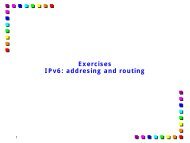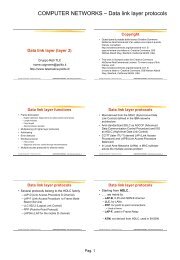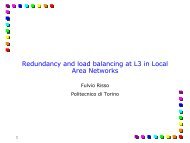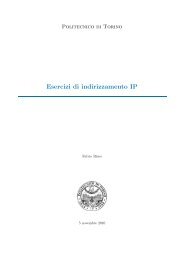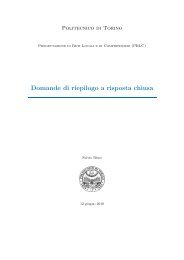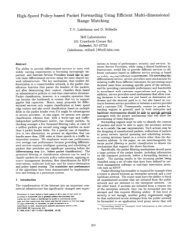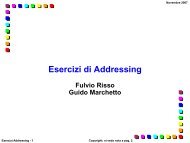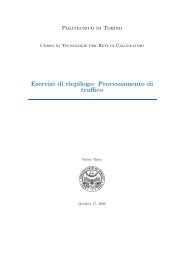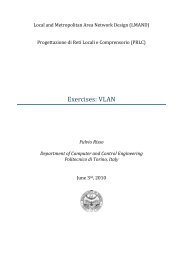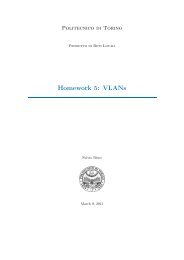Esercizi Routing.pdf - the Netgroup at Politecnico di Torino
Esercizi Routing.pdf - the Netgroup at Politecnico di Torino
Esercizi Routing.pdf - the Netgroup at Politecnico di Torino
Create successful ePaper yourself
Turn your PDF publications into a flip-book with our unique Google optimized e-Paper software.
3.3. Link St<strong>at</strong>e<br />
1. Quali sono le informazioni trasport<strong>at</strong>e nei pacchetti link st<strong>at</strong>e?<br />
2. A che cosa servono i pacchetti <strong>di</strong> Hello?<br />
3. Descrivere il meccanismo us<strong>at</strong>o dai routers per sincronizzare i rispettivi link st<strong>at</strong>e d<strong>at</strong>abase<br />
4. Come vengono calcol<strong>at</strong>e le tabelle <strong>di</strong> routing in un algoritmo link st<strong>at</strong>e?<br />
5. In quale modo gli algoritmi link st<strong>at</strong>e garantiscono la coerenza della rete?<br />
6. Perchè le reti che utilizzano un protocollo link st<strong>at</strong>e convergono più velocemente rispetto a quelle<br />
che fanno uso <strong>di</strong> protocolli <strong>di</strong>stance vector?<br />
7. Perchè i numeri <strong>di</strong> sequenza sono importanti nei protocolli link st<strong>at</strong>e?<br />
8. Illustrare come le reti broadcast (es. LAN E<strong>the</strong>rnet) vengono viste e gestite negli algoritmi <strong>di</strong><br />
routing link st<strong>at</strong>e<br />
18



